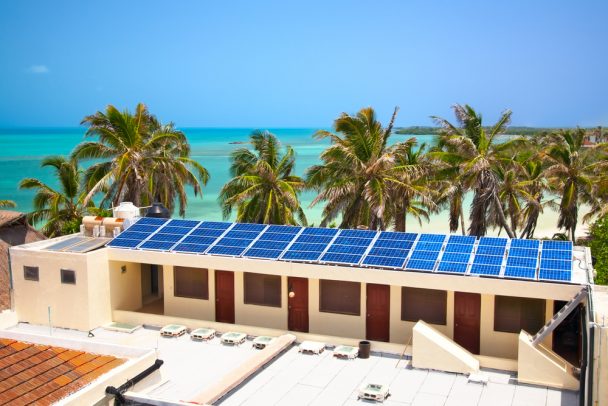By implementing a series of simple and inexpensive eco-friendly measures, you’ll be able to cut your hotel’s electricity and gas bills up to 20 percent. If energy optimization is one of your New Year’s resolutions, start with lighting control, optimising room and water temperature and raising the energy awareness among the staff. Here is where you should start.
Lighting
Although a single bulb may not consume a lot of power, hundreds and hundreds of them burning half a day can make a difference. The first step should be to install occupancy and daylight sensors so that the common room lights are only on when required. Then you should consider low-energy options.
If you have relied on tungsten GLS lamps and T12 fluorescent tubes, ditch those for much more energy-efficient T5 tubes and compact LED lamps. These should reduce the lighting-related electricity costs by 80 percent. In addition, LED bulbs last up to 25,000 hours, cutting the replacement expenses, too. And as they produce less heat, they put much less strain on the air conditioning system. If you’re aiming to earn the reputation of an inviting green hotel, LED lighting is the right thing for you.
Air conditioning
A lot of energy that would otherwise be wasted, can be saved through responsible use of air conditioning. First of all, avoid operating both heating and cooling systems at once, although this can be a common problem in hotels. Instruct your staff to switch off the heating when the room temperature of 21°C has been reached.
That considering, back-of-house temperatures can probably be set lower than those at front-of-house as the employees are constantly in motion. Conversely, avoid using air conditioning for cooling, until the indoor temperature exceeds 23-24°C. Finally, invest in a building management system (BEMS). These systems control and monitor heating, ventilation and air conditioning, helping you reach the optimal use pattern. By implementing BEMS, you can reduce total energy costs by more than 10 percent.
Heating
Bedrooms and corridor areas are spaces that don’t need the same amount of heat as the rest of the facilities. People need a lower temperature for better sleep, while corridors are exposed to draughts and constant heat dissipation. In other words, anything higher than 19-21°C isn’t only expensive but also uncomfortable for your guests.
Make sure your heating system is under control. Equip it with timer switches and thermostatic radiator valves. Also, check that thermostats are placed away from draughts, sunlight, radiators and fireplaces. If you service your boiler regularly, you’ll be able to save up to 10 percent of your annual heating costs. A portion of the heat is lost in transfer, so make sure the pipelines feeding the bedrooms and common areas are well insulated.
Hot water
Hot water doesn’t need to be scalding hot. What is more, temperature of 60°C is ideal, as it provides comfortable enough hot water and is still hot enough to kill legionella bacteria. The latest innovation in water heating is the condensing boiler technology. The high performance of these boilers is achieved through pre-mix burner technology, which recovers almost all of the combustion heat. As a result, their efficiency at 50°C reaches up to 97 percent. Also, think about fitting spray water taps as they use less hot water, and consequently less energy. Instruct your staff to report any leaking faucets and hire a plumber to repair them all.
What few hotel managers come to realise is that energy efficiency measures that you apply aren’t just going to bring an economic benefit, but also improve the reputation of your hotel as a sustainable and responsible business.
